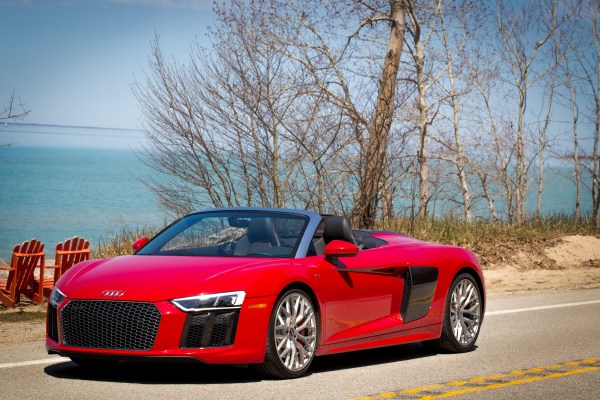After announcing plans to ship cars running Android and work with Nvidia to build automotive AI systems, Audi today put in place the latest piece of its self-driving car puzzle. The German carmaker has signed a memorandum of understanding with Huawei — the world’s third-largest smartphone maker after Samsung and Apple — to develop intelligent car technology, specifically in the areas of autonomous driving and services that use a new cellular standard, LTE-V, designed specifically for vehicles.
No financial details were disclosed with the deal, which Audi said is part of a wider agreement between Germany and China to develop more collaborations between the two countries’ respective businesses.
Audi and Huawei also are not providing a lot of specifics about what they would be developing together, except to note that the deal will cover the two building and testing data connectivity, and working on “intelligent driving and the digitalization of services in the vehicle environment.” Vehicles developed in the collaboration will initially be sold in China.
Huawei is one of the world’s big handset makers, but it originally started in networking equipment and this deal appears to be about building on that latter business, specifically in developing services for a new variation on LTE called LTE-V.
“We are entering a new era of intelligent vehicle that will see the emergence of new technological synergies between information and communications technology and the automotive industries,” commented Veni Shone, president of LTE at Huawei, in a statement. “With increased innovation in mobile connectivity, Huawei is committed to transforming the driving experience.”
Last year, Audi was one of the first non-Chinese car makers to test LTE-V services, which appear to work on regular LTE connections but are optimised for use in moving vehicles and for the kind of data communications you might need in a car, versus, say, over a smartphone.
Examples include traffic information that’s calculated by using data from traffic light systems and video monitors in intersections.
While a lot of the focus so far on connected and autonomous cars has been on who will be in the driver’s seat when it comes of operating systems, and how soon we might be to watertight self-driving systems (and how we will get there), network connectivity will be one of the obvious, if unsung, aspects that will need to be addressed.
Audi, part of the Volkswagen group, is one of the shareholders of Here, the mapping business that was formerly a part of Nokia, and it has been making a number of moves to line up its strategy in connected and autonomous vehicles. That has also included investing in startups like Cubic Telecom, which is providing the technology that will allow for cars to connect to cellular networks, regardless of which country the cars are operating in and where they were purchased. It’s not clear how and if Audi’s new MOU with Huawei will link up with the work it’s been doing with Cubic. (We have reached out to Cubic to ask.)
“We are intensifying our joint research with Huawei in the area of intelligent connected vehicles,” explained Saad Metz, Executive Vice President of Audi China, in a statement. “Our aim is to improve safety and optimize traffic flows in order to create intelligent cities. The concepts will initially be concentrated on the Chinese market.”
